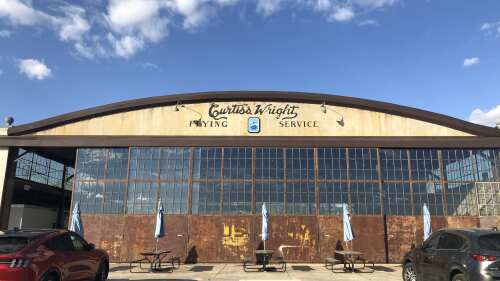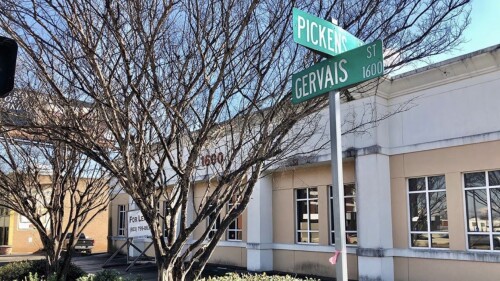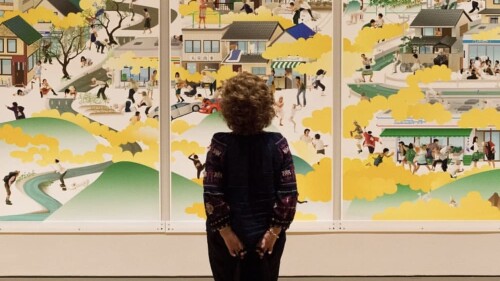#TBT: The story behind Jubilee
This is part of our #TBT Series in collaboration with Historic Columbia.
At the corner of Richland and Marion streets in downtown Columbia, there is a village of ghosts. Well, it’s a village of ghost structures — white metal frames outlining the former sites of homes and shops that comprised a once-thriving African American community. At the heart of it all stands a house — a real one with four walls and a roof — known as the Mann-Simons Site.
The site is named for Celia Mann, an enslaved midwife from Charleston believed to have been purchased by boatman Ben Delane, a free man of color, in the 1830s. The couple later married, making their home in Columbia in the cottage that is now the Mann-Simons Site. As members of Columbia’s small population of free people of color, Ben and Celia challenged social norms at a time when most Africans and African Americans were enslaved.
The home remained in the hands of the same family through the Civil War and the burning of Columbia. The family witnessed Reconstruction and Jim Crow, as well as the Civil Rights movement of the 1960s.
In 1970, threat of demolition loomed for the site. As the structures surrounding the cottage were razed, a grassroots movement sprang up to protect the home from the wrecking ball. In 1978, the Mann-Simons cottage opened as a museum and hosted the first-ever Jubilee festival.
The big 4-0.
Jubilee: Festival of Black History & Culture has been showcasing the voices, talent and craftsmanship of Columbia’s African American community for 40 years, making it the longest-running festival in the city’s history.
Here are a few highlights from forty years of Jubilee:
1978
The inaugural Jubilee drew diverse crowds. It served to showcase the work of the community involved at the Mann-Simons Site year-round, especially the work done by children at the MS summer camps.
1981
The 1981 Jubilee featured a Harlem Renaissance theme, which celebrated black artists, writers and musicians of the 1920s. Admission to the festival was $1 for adults and $0.50 for children. (This year’s festival is free.)
1984
In its sixth year, the festival served to showcase the many events and workshops held throughout the previous year at Mann-Simons. School children who attended the Mann-Simons summer camp led a parade of ceremonial umbrellas they’d made, the Sea Island Singers headlined, a double-dutch showcase was held, and workshops on traditional hair braiding and breakdancing were taught in the basement.
1986
The Caribbean-themed Jubilee lasted for two days and had a host of steel drum performers and hands-on workshops. There was also an intricate double Dutch and karate demonstration. (Not at the same time, obviously, but that would be fun. Maybe for the 50th...hmm...)
1994
“A Lowcountry Afternoon” sees folks enjoying the breeze on the front porch at Mann-Simons and an emphasis placed on the art of making sweetgrass baskets.
Harkening back to the matriarch of the site, Celia Mann, traditional healer and midwife Siti Opio gave a lecture about African rituals in childbirth in the basement at Mann-Simons. That year, the 54th Massachusetts Infantry set up camp at Robert Mills. In the evening, Historic Columbia screened Glory in the Carriage House at Robert Mills.
1995
The South Carolina Department of Archives & History got involved in 1995 and offered genealogy workshops at the site. Historic Columbia offered a lecture on African American historic sites (a precursor to the current bus tour offered) and a life of the Mann-Simons Site lecture.
Emphasis that year was placed on education, in which free candle making, butter churning, and rug + quilt making were offered.
1999
Jubilee spread across two evenings in September 1999 with a gala hosted at the Seibels House the night before the festival. Guests enjoyed a performance of the Workshop Theatre’s Five Guys Named Moe and danced the evening away with a live jazz quartet.
The festival that year comprised all Historic Columbia’s properties and featured (according to The State newspaper) hayrides with “real cowboys.” Yes please. There was also a reenactment with the 10th Cavalry Buffalo Soldiers at the Robert Mills House, a drum workshop, art expo, smithing workshop, and a stained-glass exhibition by Samuel Hodge.
This year also saw the premier of the African American Heritage Sites Tour, which we still offer today.
2003
For the 25th anniversary of the festival, a reunion was held at the Big Apple on Henderson Street. There were swing dance lessons from Frankie Sullivan and a live performance by legendary musician Skipp Pearson.
One for the history books
This year marks the 40th annual of Jubilee, officially making it the longest-running festival in downtown Columbia. To celebrate, Historic Columbia has pulled out all the stops – live music (with a headlining performance from Kindred the Family Soul), sweetgrass basket making, bus tours, food trucks, and the chance to explore the space that started it all: the Mann-Simons Site.
The event is free and open to the public. We invite you to bring your family, your grandparents, and maybe some friends you haven’t seen in a while. (Jubilee is about bringing people together, after all.)
See you this Saturday, Sept. 22 from 11-6 p.m. at the Mann-Simons Site (1403 Richland Street).
That’s it for us this week. If you need me, I’ll be sitting on Celia’s front porch. Why don’t you come visit?
–Lois from Historic Columbia























